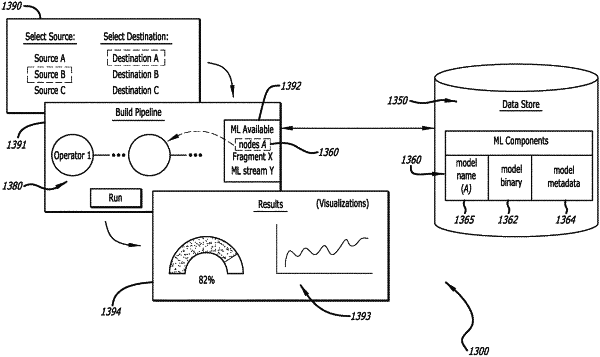| CPC G06N 5/025 (2013.01) [G06F 18/2148 (2023.01); G06N 20/00 (2019.01); G06F 8/4452 (2013.01); G06F 16/248 (2019.01); G06F 16/24553 (2019.01); G06F 16/287 (2019.01)] | 20 Claims |

|
1. A computer-implemented method, comprising:
inputting content comprising a set of training data and pipelined code into a web-based programming application, the pipelined code comprises a first series of operators that are configured to perform one or more tasks based on collective operations by the first series of operators, wherein, during processing, a first operator of the first series of operators is to receive the set of training data and each remaining operator of the first series of operators are to receive input based on an output from a preceding operator;
generating results produced by the one or more tasks performed by the pipelined code during processing of the set of training data by one or more operators from the first series of operators of the pipelined code, the results include one or more graphical visualizations;
causing a rendering of the results including the one or more graphical visualizations positioned to be visually in-line with and distinct from a rendering of the first series of operators associated with the pipelined code and the training data, the rendering of the one or more graphical visualizations with the first series of operators and the training data allows for scrolling between the pipelined code and the one or more graphical visualizations; and
storing at least a portion of the pipelined code as a machine learning component within a cloud-based data store,
wherein the machine learning component is inserted, upon selection of one or more displayable objects, as an operator into a second series of operators for processing of data from a selected data source by a data stream processor, the machine learning component being configured to perform analytics on processed data from a preceding operator in the second series of operators that is different than the input data from the selected data source, and
wherein the data stream processor generates a graphical visualization of results of the analytics on the processed data.
|